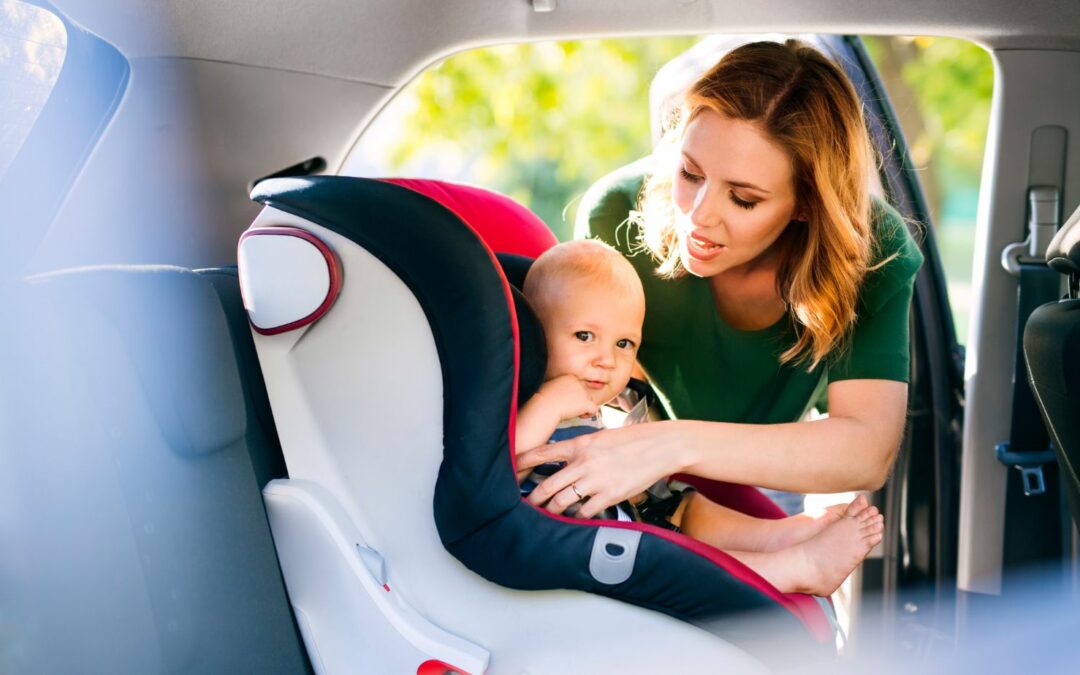Choosing the right convertible car seat is crucial for your child’s safety. It ensures their well-being during travel. A convertible car seat can adapt to your child’s growth. Without a doubt, it offers the highest level of protection during car rides. With a great amount of options on the market, choosing the right one can be a daunting task. In this guide, we’ll delve into key considerations with great detail. Prioritizing the safety of your precious cargo when choosing a convertible car seat.
The Importance of a Convertible Car Seat
Let’s stop for a moment and simplify everything down a bit. The first thing you do is fasten your seatbelt before going on the road, right? The same has to apply, if not with even more precautions for your child as well. Safety regulations and laws are there for a reason.
Safety First
A convertible car seat’s purpose is to keep your child safe and secure during car rides. It offers superior protection compared to standard infant car seats. It also accommodates your child as they grow from infancy to toddlerhood.
Long-Term Savings
Convertible car seats can last your family for several years. They accommodate your child’s changing needs. A quality convertible car seat can save you money in the long run. It eliminates the need to buy different car seats as your child grows.
Legal Requirements
Many states have specific laws requiring the use of car seats for infants and young children. A convertible car seat ensures compliance with these laws. All the while keeping your child protected. California car seat laws are among the most well-thought-out. They were designed to ensure the safety of children during car travel by all means. Above everything else, with specific regulations that consider different age groups and sizes.
Factors to Consider When Choosing a Convertible Car Seat
First, we took a look at why convertible car seats are crucial. Now, let’s explore the key factors to consider when making your selection.
- Safety Features
Safety is paramount when it comes to choosing a car seat. Look for a seat that meets or exceeds safety standards set by organizations. The two most notable ones being the National Highway Traffic Safety Administration (NHTSA) and the American Academy of Pediatrics (AAP). Features to consider include a five-point harness, side-impact protection, and energy-absorbing foam.

- Ease of Installation
Proper installation is critical for the effectiveness of a car seat. Ensure that the seat you choose is easy to install correctly in your vehicle. Many seats now come with features like LATCH systems. Clear installation instructions to simplify the process. If not, it is always advisable to check the manufacturer’s website.
- Weight and Height Limits
Check the weight and height limits of the car seat to ensure it will accommodate your child as they grow. Some convertible car seats have higher weight limits. They allow your child to stay rear-facing for longer. That is the safest position for infants and young toddlers.
- Comfort and Padding
Your child’s comfort during car rides is essential for their well-being. Always check if the car seat has ample padding, adjustable headrests. A comfortable harness can also come in handy in lots of situations. Some seats even have removable, machine-washable covers for easy cleaning.
- Versatility
Convertible car seats are designed to grow with your child. Look for a seat that offers multiple recline positions and adjustable features. Thereby ensuring a proper fit at each stage of your child’s development.
- Ease of Cleaning
Children can be messy, so consider how easy it is to clean the car seat. Removable, machine-washable covers are a convenient feature. They allow you to keep the seat clean without hassle. Mess free is always the way to go.
- Fit in Your Vehicle
Not all car seats fit well in every vehicle. Some car seats are bulkier than others, so it’s essential to check if the seat will fit comfortably in your car. Leaving enough space for other passengers.
- Durability and Longevity
Invest in a car seat made of high-quality materials that can withstand wear and tear. Remember that convertible car seats are intended for long-term use. Durability plays a key role here.
- User Reviews and Safety Ratings
Research user reviews and safety ratings for the car seat you’re considering. Don’t be shy, ask around. Real-life experiences from other parents can provide valuable insights. What real-life experiences did they have with the seat’s performance and ease of use?
- Price and Budget
Convertible car seats come in a wide range of price points. Try to keep a balance, but also prioritize safety and quality over cost. A well-designed, reliable car seat is a worthwhile investment in your child’s safety.
Types of Convertible Car Seats
Convertible car seats come in various styles to meet different needs. Understanding the types can help you make the right choice.
- Rear-Facing Only Convertible Car Seats
These seats are designed for infants and can only be used in the rear-facing position. They often have lower weight limits but provide excellent protection for newborns.
- Convertible Car Seats
These seats can be used in both rear-facing and forward-facing positions. They are suitable for infants and toddlers. Offering more extended use compared to rear-facing only seats.
- All-in-One Convertible Car Seats
All-in-one seats are the most versatile option. They can be used in rear-facing, forward-facing, and booster seat modes. While they provide extended use, they tend to be larger and heavier.
Installation Tips
Proper installation of your convertible car seat is crucial for your child’s safety. Here are some installation tips to keep in mind:
Read the Manual: Always read the car seat’s manual and your vehicle’s manual thoroughly. First before attempting installation, but during the process as well. You never know what you have missed out on the first read-through.
Use the Right Seat Belt Path: Ensure you are using the correct seat belt path. It can differ for rear-facing or forward-facing installation. Those details are usually specified in the manual.
Check for a Secure Fit: After installation, shake the car seat to ensure it doesn’t move more than an inch in any direction.

Harness Adjustment: Adjust the harness straps to fit snugly over your child’s shoulders without being too tight.
Rear-Facing for as Long as Possible: Whenever possible, keep your child in the rear-facing position. Up until they reach the seat’s maximum weight and height limits.
Conclusion
Choosing the right convertible car seat is a significant decision for all parents. It is natural to be concerned about their child’s safety during car rides. By considering factors such as safety features, ease of installation, weight and height limits, comfort, and versatility, you can make an informed choice. Remember to prioritize your child’s safety over cost. Check for user reviews and safety ratings to ensure you select the best convertible car seat for your family. With the right seat in place, you can enjoy peace of mind while traveling with your precious cargo.
Jessica has a flair for writing engaging blogs and articles. She enjoys reading and learning new things which enables her to write different topics and fields with ease. She also strives to break down complex concepts and make them easy for anybody to comprehend.





